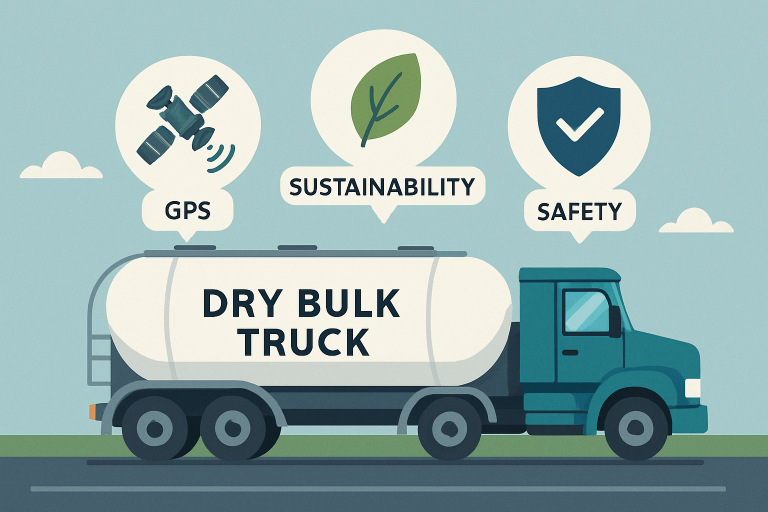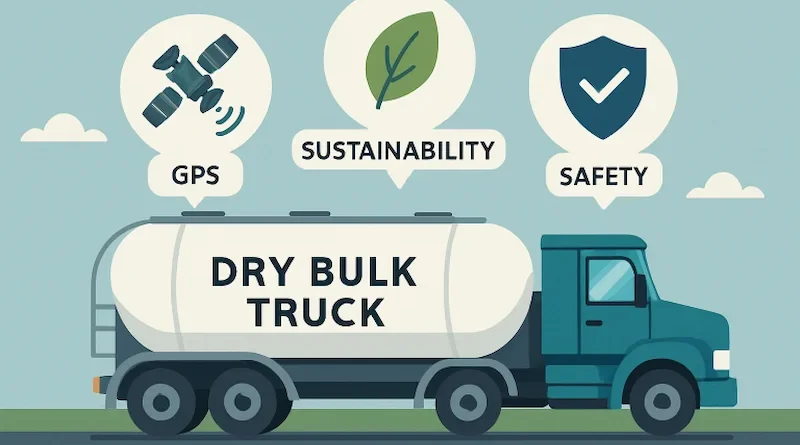Efficient Strategies for Safe and Sustainable Dry Bulk Material Hauling
The movement of dry bulk materials such as coal, grain, minerals, and aggregates is a foundation of global trade and supply chains. Ensuring each haul is conducted safely, efficiently, and with minimal environmental impact is central to the long-term viability of the industry. In today’s evolving transportation landscape, finding a reliable dry bulk trucking company committed to best practices is more vital than ever.
Industry leaders are rapidly adopting innovative solutions to boost performance, lower risk, and meet sustainability goals. The convergence of technology, environmental stewardship, and regulatory adherence is driving new standards that benefit both companies and their stakeholders, transforming dry bulk material hauling into a smarter, safer, and more responsible activity.
As society demands more sustainable supply chains, carriers and shippers alike are challenged to reduce carbon emissions, cut energy use, and increase transparency. This article explores the strategies and technologies now setting the bar for responsible bulk hauling operations in North America and beyond.
Efficient operations are only part of the picture; responsible dry bulk material hauling also means safeguarding employees, communities, and natural resources. Learning from trailblazing companies highlights the tangible impacts of more innovative protocols, while showcasing the critical role of investment in innovation.

Technological Advancements in Dry Bulk Hauling
Technology adoption is rapidly transforming the dry bulk shipping sector. Automation, telematics, and intelligent routing now contribute to seamless, safe cargo moves while improving asset utilization. Recent years have seen the emergence of energy-efficient rail-guided vehicle (RGV) routing systems, which automate freight movements and optimize loading and unloading processes, thereby reducing both fuel use and operational costs. Modern fleet telematics, GPS tracking, and real-time monitoring technology provide better visibility and facilitate proactive decision-making, thereby reducing the margin for error and promoting safer trips.
Additionally, Internet of Things (IoT) sensors are attached to hoppers and containers, enabling continuous monitoring of load stability and environmental conditions. This not only enhances safety for operators but also helps ensure that cargo is delivered as expected, a must for industries regulated by quality requirements. Leveraging big data analytics further sharpens planning and scheduling, supporting dynamic route optimization and more accurate maintenance forecasting.
Sustainable Practices for Environmental Responsibility
Sustainability is no longer optional in dry bulk logistics—clients, governments, and communities all expect measurable action. Innovative carriers now integrate eco-design in their fleets: low-emission engines, advanced aerodynamics, and alternative fuel adoption. One emerging trend is the use of wind-assisted propulsion on larger dry bulk vessels, an approach that cuts traditional fuel consumption and directly supports decarbonization mandates. Such investments benefit both the bottom line and the environment, positioning companies for ongoing regulatory compliance.
Companies are more frequently turning to lifecycle assessment tools to measure and offset the carbon footprint of entire operations. Sustainable site management protocols also extend to transloading and storage yards, while recycling initiatives reduce landfill impact from packaging and plastics. Many forward-thinking operators now design sustainability into their supply chain contracts, solidifying commitments to environmental responsibility from the ground up.
Importance of Regular Maintenance
Proactive maintenance is fundamental to operational reliability in dry bulk material hauling. Keeping vehicles and equipment in peak condition not only prevents expensive breakdowns but also enhances fuel efficiency and prolongs the lifespan of assets. Maintenance protocols should include regular inspections of braking systems, tires, and hydraulic components, while also embracing predictive analytics that signal potential issues before they occur. This approach limits the risk of accidents and promotes safer worksites for all involved, and is recognized as an industry standard across leading transportation companies.
Integrated diagnostic technology can further streamline maintenance planning, ensuring that fleets remain compliant with safety regulations. Companies that adhere to strict preventative maintenance schedules often achieve higher safety ratings and lower insurance costs, reflecting the tangible benefits of industry best practices.
Training and Safety Protocols
Advanced equipment and green policies only yield their full value when proper training and safety measures are in place. Effective onboarding for new hires, ongoing skill development, and periodic safety drills minimize workplace accidents and empower staff to respond to emergencies. Comprehensive, hands-on training for operating specialized bulk trailers or containers is vital, as is clear communication of hazard identification practices.
Many leaders integrate digital training modules and mobile apps to provide real-time guidance on changing safety standards, legal compliance, and on-site risk assessment. This type of continuous education builds a pervasive safety culture and demonstrates an employer’s commitment to the well-being of staff and clients alike. Research highlights that organizations investing in regular safety and compliance training experience marked reductions in incident rates and claim costs.
Regulatory Compliance and Industry Standards
Adhering to ever-evolving regulations is central to safe, transparent operations in the dry bulk sector. Regulatory bodies promote not only safety but also broader Environmental, Social, and Governance (ESG) benchmarks for responsible business. Meeting these industry standards ensures traceability, fiduciary accountability, and environmental stewardship throughout the logistics process. The recent introduction of digital compliance tools simplifies ongoing record-keeping and audit preparedness, further streamlining adherence to federal, provincial, and international codes.
As ESG accountability grows, companies that can document responsible labor, environmental, and safety practices will also achieve notable reputational and commercial benefits. Aligning with reputable industry organizations helps dry bulk haulers stay ahead in the regulatory environment and signals a genuine commitment to operational transparency to customers and partners.
Conclusion
Efficient and sustainable dry bulk material hauling requires a comprehensive approach that unites smart technology, sustainable practices, preventive maintenance, high-quality training, and unwavering compliance. By continuously advancing operational standards, companies not only protect workers and the environment but also secure stronger, longer-term partnerships with customers and communities. As global supply chains only grow more demanding, those equipped with the right strategies will drive the future of safe and responsible dry bulk hauling.
Visit the rest of the site for more interesting and useful articles.

